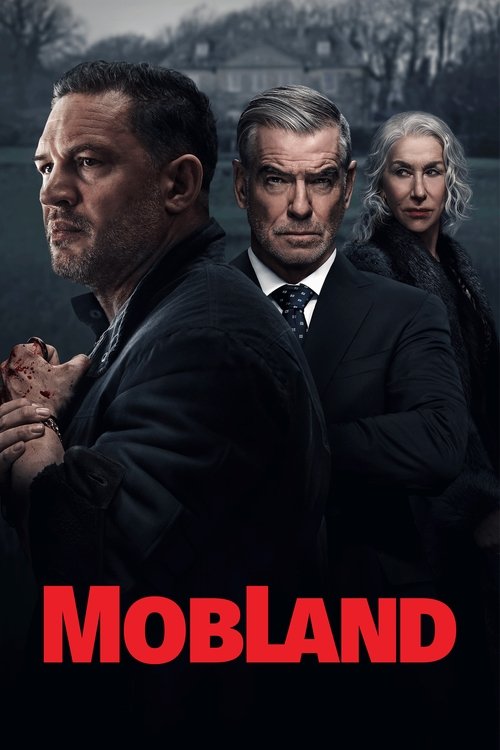
Ask Your Own Question
What is the plot?
Episode 7 of "The Twisted Tale of Amanda Knox," titled "U were there," begins with Amanda Knox's dramatic acquittal in an Italian courtroom after four years behind bars. The emotional impact is palpable as Amanda breaks down in tears upon hearing the verdict. Cameras capture every moment of her release, highlighting the overwhelming relief and the bittersweet nature of her freedom.
As Amanda leaves the prison, she is serenaded by her fellow inmates chanting "libertà" (freedom), symbolizing the bonds she formed during her incarceration. In a touching moment, she passes on a tradition by handing her possessions to another inmate, symbolically sharing her newfound freedom. However, her departure from Italy requires careful coordination due to the dangerous reality that awaits outside prison walls. The press and angry mobs pose very real threats to her safety.
Amanda is placed in a car to leave the prison, but she panics as she realizes she doesn't know where she's going or who is driving her. The driver is uncommunicative, adding to her anxiety. Suddenly, a man jumps into the car, claiming to be ex-FBI, which initially causes more confusion. However, Amanda's mom opens the back door, reassuring her that they are heading to a safe house due to the chaos around the prison.
The episode explores the challenges Amanda faces in reintegrating into society. Despite being legally vindicated, she encounters cynicism and skepticism from the public. The media attention and the stigma surrounding her case make it difficult for her to achieve normalcy. The relationship between Amanda and Raffaele Sollecito is also highlighted, showing how it impacted Amanda emotionally after four years of prison.
Amanda decides to confront Prosecutor Giuliano Mignini, who played a significant role in her unjust conviction. This decision causes concern for her family, particularly her mother Edda and her father Curt, who fear the emotional risk. Amanda writes letters to Mignini, expressing compassion and empathy rather than seeking an apology. She refers to him as "my prosecutor," which is culturally and emotionally confusing for him.
Amanda secretly travels with her mother and husband to meet Mignini. When they finally encounter him, he appears more human and tender-hearted than Amanda expected. They engage in honest conversation, with Amanda expressing that she does not hate him and seeks closure. This confrontation is a pivotal moment for Amanda as she attempts to process her trauma and accept the reality of her situation.
The episode concludes with Amanda reflecting on her journey and the ongoing challenges she faces. Despite her legal acquittal, the public's perception of her remains complex, with many still questioning her innocence. The episode ends with Amanda in her bedroom in America, symbolizing her return to a more private life but still grappling with the aftermath of her ordeal.
What is the ending?
The ending of "The Twisted Tale of Amanda Knox," season 1, episode 7, depicts Amanda Knox's final acquittal after years of legal battles, highlighting her release and the resolution of the murder case of her roommate Meredith Kercher. The episode closes with Knox regaining her freedom and the truth about the flawed investigation and trial coming to light.
In a detailed narrative, the episode opens with the tense atmosphere of the appeal trial, where Amanda Knox and Raffaele Sollecito face scrutiny over the DNA evidence that had been pivotal in their initial conviction. The scene shows the defense teams challenging the credibility of the forensic findings, emphasizing the late discovery of Sollecito's DNA on Kercher's bra clasp and the questionable evidence regarding the murder weapon. The courtroom is filled with a mix of anticipation and anxiety as the judges deliberate.
Next, the scene shifts to the emotional toll on Amanda Knox, portrayed with close-ups of her expressions reflecting a mix of hope and exhaustion. The narrative recounts the timeline of events leading to this moment, including the initial shock of Meredith Kercher's murder, the media frenzy branding Knox as "Foxy Knoxy," and the intense interrogation scenes where Knox is shown struggling with language barriers and police pressure.
As the verdict is announced, the camera captures the moment Knox and Sollecito are acquitted, their relief palpable. The episode then transitions to scenes of Knox's release from prison, her reunion with family and supporters, and the media coverage that contrasts the earlier vilification with a more sympathetic portrayal. The final scenes underscore the miscarriage of justice and the impact of sensationalized media on the case.
The fate of the main characters at the end is clear: Amanda Knox is exonerated and freed, Raffaele Sollecito is also acquitted, and Rudy Guede, the third man convicted separately, has served his sentence. Meredith Kercher's tragic death remains the central event, but the series closes by emphasizing the wrongful conviction and the long fight for truth and justice.
This episode meticulously details each step of the legal process and personal struggles, avoiding generalizations, and presents a factual recounting of the case's resolution, highlighting the complexities and human costs involved.
Is there a post-credit scene?
The TV miniseries "The Twisted Tale of Amanda Knox," season 1, episode 7, produced in 2025, does not have any publicly documented post-credit scene. None of the available reviews or detailed episode summaries mention a post-credit scene or describe any additional footage after the episode's main content.
The series focuses on Amanda Knox's wrongful imprisonment and her fight to prove her innocence, with the narrative concluding within the episode runtime itself. If a post-credit scene existed, it would likely have been noted in reviews or viewer discussions, but no such references are found in the sources available.
What key events happen in Episode 7 of The Twisted Tale of Amanda Knox?
In Episode 7, titled "U were there," the narrative focuses on the intense pressure from the Italian police as they attempt to break Amanda Knox and Raffaele Sollecito during the investigation. Meanwhile, Amanda's mother, Edda, is shown racing to reunite with her daughter, highlighting the emotional strain on the family amid the legal turmoil.
How is Amanda Knox portrayed emotionally and psychologically in Episode 7?
Amanda Knox is depicted as increasingly isolated and frustrated, struggling with the language barrier and the overwhelming pressure from the police interrogation. The episode emphasizes her confusion and emotional turmoil as she faces the harsh realities of the investigation and the media circus surrounding her case.
What role does Amanda's mother, Edda, play in Episode 7?
Edda Knox is portrayed as a determined and supportive figure who is actively trying to reunite with Amanda. Her efforts underscore the family's emotional struggle and the personal impact of the wrongful conviction on those close to Amanda.
How does the episode depict the police interrogation tactics used on Amanda and Raffaele?
Episode 7 shows the Italian police employing intense and coercive interrogation tactics aimed at breaking Amanda and Raffaele's resolve. The pressure is depicted as relentless, contributing to the mounting tension and the eventual wrongful conviction.
Are there any significant developments in Amanda's relationship with Raffaele Sollecito in Episode 7?
The episode explores the strain on Amanda and Raffaele's relationship as they endure the investigation and interrogation together. Their bond is tested by the external pressures, but they remain connected in their fight to prove their innocence.
Is this family friendly?
The TV miniseries "The Twisted Tale of Amanda Knox," including season 1 episode 7, is not family friendly and is rated TV-MA in the United States, indicating it is intended for mature audiences. It contains mild sex and nudity, mild violence and gore, moderate profanity, mild alcohol/drug use, and moderate frightening and intense scenes.
Potentially objectionable or upsetting aspects for children or sensitive viewers include:
- Scenes involving violence and gore, though mild, related to the crime and legal drama.
- Moderate use of profanity.
- Some intense and frightening moments reflecting the harrowing and stressful experiences of wrongful imprisonment.
- Mild sexual content and nudity.
- Depictions of alcohol and drug use, though mild.
Because the show is based on a true crime story involving a murder case and wrongful conviction, the tone and subject matter are serious and may be disturbing for younger viewers or those sensitive to crime and legal injustice themes.



















































